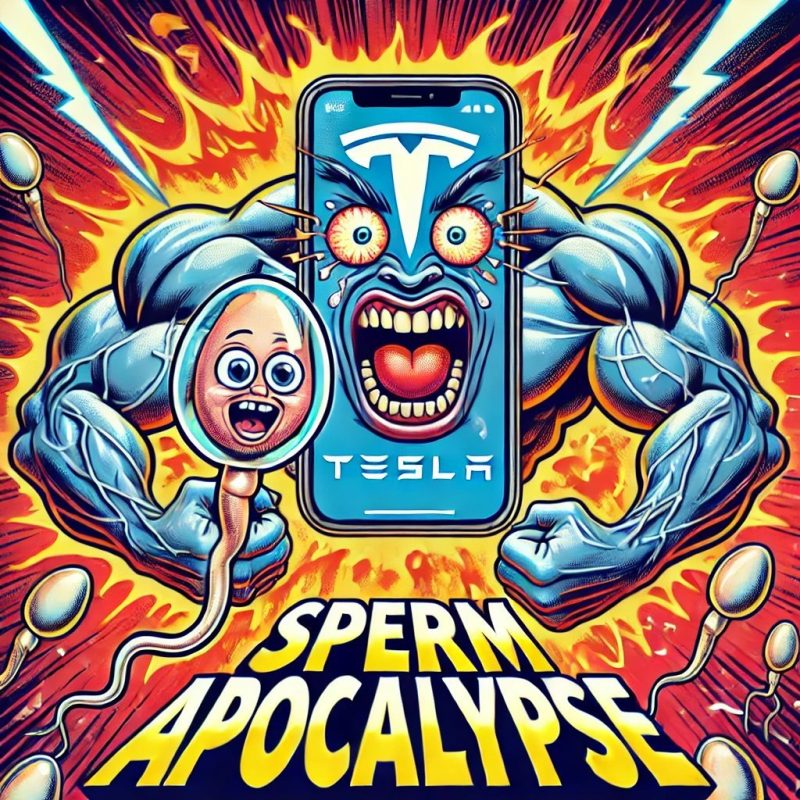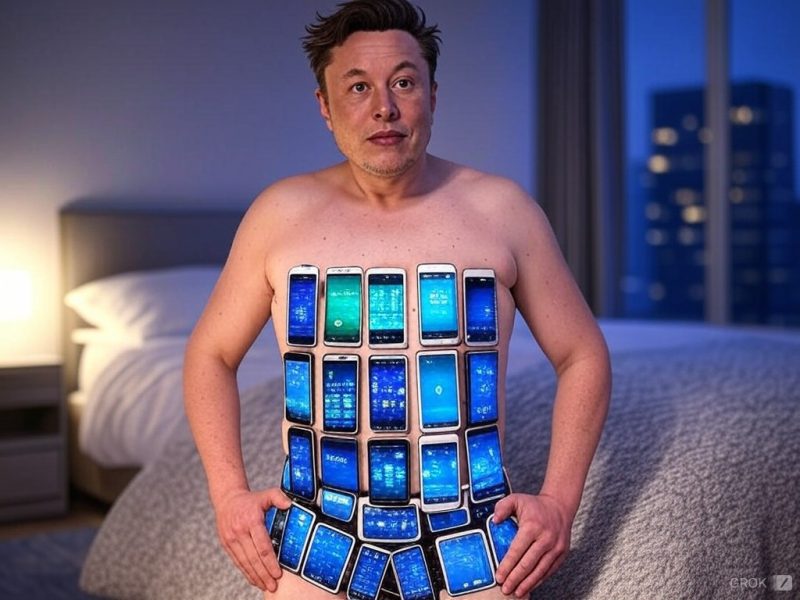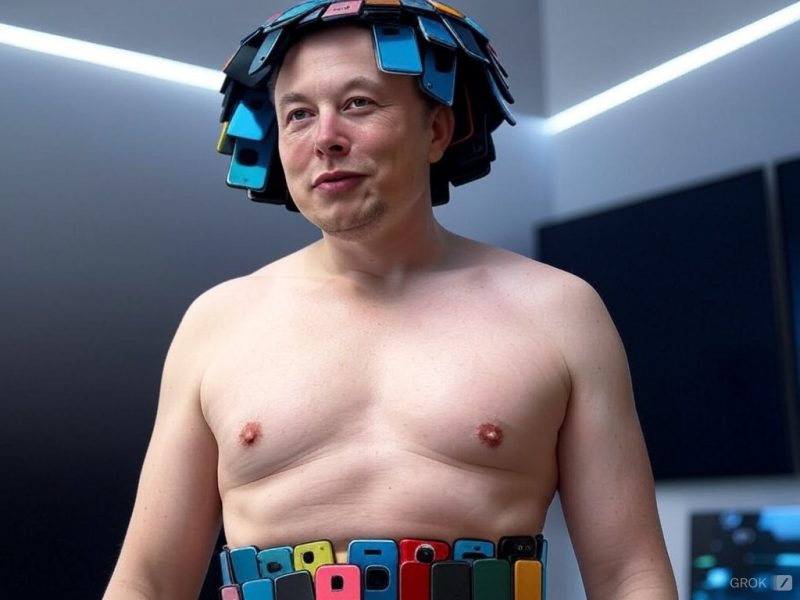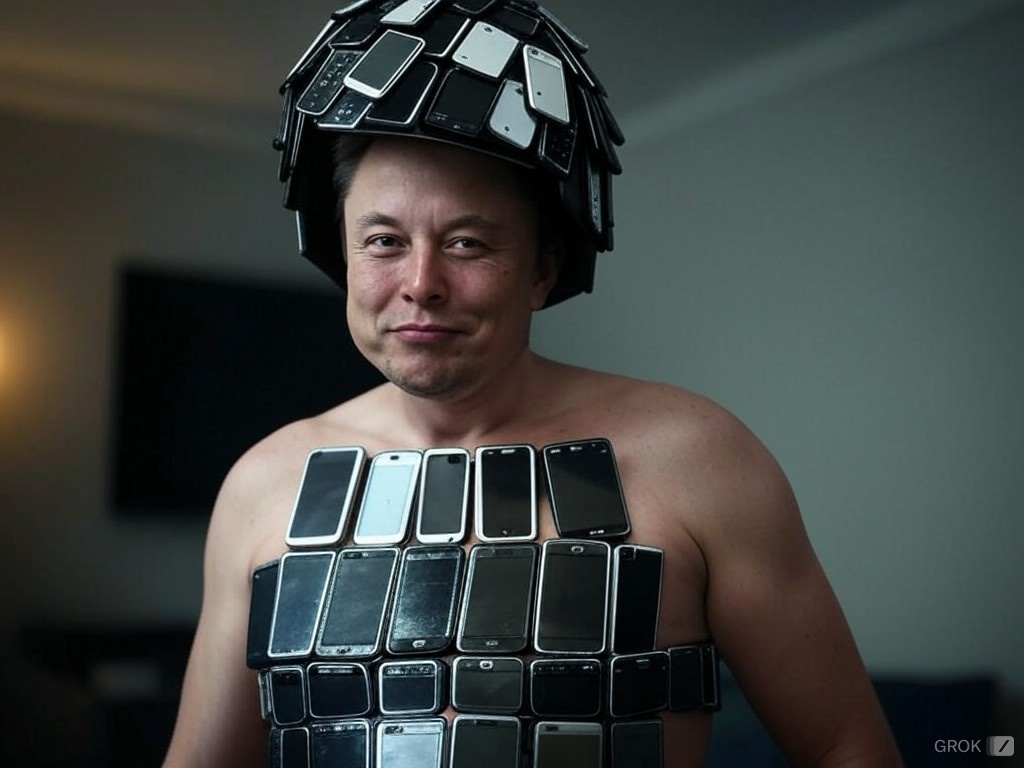During an episode of The Joe Rogan Experience, Elon Musk made a flippant quip: “If I had a helmet of cell phones strapped around my head, and around my nuts, I wouldn’t be worried.” Coming from a figure as influential as Musk—often hailed as a visionary disruptor across aerospace, automotive, and digital industries—such a statement instantly grabs public attention. Yet while Musk’s remark may have been off-the-cuff or humorous, it carries real consequences for how everyday people perceive the potential risks of radiofrequency (RF) radiation. Here’s why his comment might do more harm than good.
https://x.com/rfsafe/status/1871798188048609721
Elon, the guy putting cell towers in space, saying that microwave radiation is ok, is like the CEO of Coca-Cola saying that Coca-Cola doesn’t cause diabetes…
https://x.com/rfsafe/status/1864732987595563515/video/1

The Power of Influence

When the world’s richest person and CEO of multiple high-tech companies casually dismisses the safety concerns of cell phone radiation, it resonates. Elon Musk’s words have the capacity to shape opinions and even policy debates, given his status as a pioneer in technology. That’s precisely why it’s problematic: people who trust Musk might echo his stance without investigating the nuanced science behind RF radiation.
Implication: Many might take this “helmet of cell phones” idea literally or as a sign that there’s zero reason for caution—ignoring evidence that contradicts Musk’s nonchalance.
Not a Scientific Consensus

Musk is an engineer and entrepreneur with deep insight into physics and product design, but he’s not a recognized expert in biology or the health impacts of electromagnetic fields (EMFs). The scientific consensus is evolving, and research into non-thermal effects of low-level microwave or radiofrequency radiation continues to expand. Regulatory bodies worldwide (e.g., the FCC in the U.S., ICNIRP in Europe) traditionally base their safety limits on thermal effects alone, but many scientists have long raised questions about oxidative stress, voltage-gated calcium channel (VGCC) disruptions, and potential reproductive or neurological impacts—risks that don’t necessarily require heating tissue.
Implication: Musk’s comment overlooks the complexity of ongoing research into non-thermal EMF effects. While he may be comfortable with risk assessments based on older, thermal-focused guidelines, his statement skates over legitimate scientific debates and studies looking at other possible hazards.
Vulnerable Populations Are Overlooked

As a healthy adult, Elon Musk may indeed not “feel worried” about personal exposure to cell phone radiation. But public-health guidelines must account for children, pregnant women, those with chronic illnesses, and people who report hypersensitivity to EMFs. Studies have shown that children’s developing brains and thinner skulls could absorb more radiation. Moreover, animal and epidemiological research has suggested correlations—though not outright proof—between low-level RF exposure and various health outcomes, from sperm quality issues to disrupted sleep patterns.
Implication: An influential figure’s personal comfort level doesn’t always translate to population-level safety, particularly for susceptible groups. Musk’s casual dismissal fails to acknowledge that what may pose minimal risk to him could be more concerning for a less-robust individual.
The “No Proof” Myth

Often, people assume that because EMF radiation is non-ionizing, it must be harmless unless it “cooks” tissue. The reality is more nuanced. Research across many disciplines—biophysics, epidemiology, neuroscience—suggests that RF exposures might trigger cellular responses without significant heating. These pathways include oxidative stress, changes in gene expression, and interference with intercellular signaling. No single study definitively “proves” a massive health crisis, but there’s enough evidence to warrant caution, ongoing research, and better safety standards.
Implication: Musk’s attitude perpetuates the myth that “if it’s not ionizing or heating, it’s safe.” Such black-and-white thinking can deter nuanced public understanding and hamper efforts to refine guidelines that address non-thermal effects.
Public Health vs. Individual Choice

Technology leaders bear an ethical responsibility when they speak publicly about health risks tied to their products or industries—just like automotive companies must be transparent about crash-test data or emissions. Telling millions of fans or consumers, “I wouldn’t worry about wearing multiple cell phones near my head or genitals,” might give the impression there’s zero cause for concern. But that’s far from a universal scientific or regulatory consensus.
Implication: If future research conclusively finds non-thermal effects at lower doses, influential tech figures could face backlash for trivializing these risks. Meanwhile, local officials, school boards, and health agencies trying to adopt precautionary measures face a tide of skepticism fueled by industry confidence.
Balancing Innovation and Precaution

It’s essential to remember that cell phones and wireless tech are critical to modern life. Innovation and progress should continue—but ideally with parallel development of safer devices, better guidelines, and robust public information. Musk is correct that widespread cell phone usage has yet to be proven catastrophically dangerous. However, lack of definitive catastrophe isn’t the same as proof of total safety.
Implication: Even if Musk is personally unafraid, large-scale usage of wireless technology justifies ongoing research and the application of the precautionary principle—especially when it comes to children’s use, overnight exposures, or places like schools and hospitals.
Moving the Conversation Forward

So how do we square Musk’s devil-may-care approach with the more cautious stance taken by scientists, activist groups, and some regulatory agencies? The middle ground involves open discourse about:
- Non-thermal Mechanisms: Acknowledge that science is investigating how low-level RF might affect cells in ways not explained by simple heating.
- Multiple Risk Factors: Recognize that EMF exposure is just one of many variables (diet, stress, environmental toxins, genetics) that collectively influence health.
- Choice and Mitigation: Provide transparent info so individuals can decide if they want to limit exposures—by using wired devices, turning off Wi-Fi at night, etc.—rather than being told, “Don’t worry at all.”
Implication: Dismissing all concerns as baseless hinders the deeper scientific inquiry needed to refine safety standards and design innovations that balance connectivity with health.
Conclusion
Elon Musk’s quip about wearing a “helmet of cell phones” might be amusing, but it does a disservice to the nuanced debate over RF radiation. When one of the world’s most influential entrepreneurs casually waves off health concerns, it can overshadow legitimate research and overshadow real questions about non-thermal biological effects. We rely on thought leaders for vision and forward-thinking solutions, but we also need them to respect credible scientific uncertainty. One offhand remark shouldn’t end the conversation; instead, it should spark a deeper look at how we can reconcile the rapid expansion of wireless tech with a transparent, evidence-based approach to public health.
Ultimately, the question isn’t whether Musk personally feels at risk—it’s whether the public deserves a more cautious and informed view on how non-ionizing radiation from mobile devices might impact our collective well-being. If someone as inventive as Musk can pioneer electric cars, reusable rockets, and satellite constellations, perhaps he can also champion safer, better-informed use of wireless technology, rather than dismiss the science behind potential risks.








